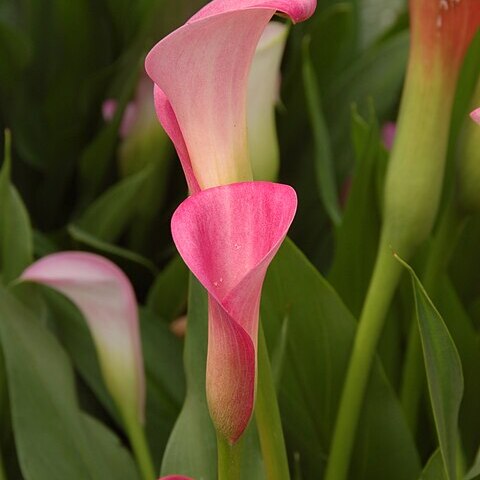Deciduous perennial herb, up to 0.8 m high. Leaves narrowly lanceolate, 150-400 x 20-70 mm. Peduncle up to 0.6 m long. Spathe 110-120 mm long, 15-20 mm broad, white-pink-dark maroon.
A large herb. It grows 40 cm tall and 30 cm wide. The leaves are green. The spathe is red to purple. The spadix is yellow.

